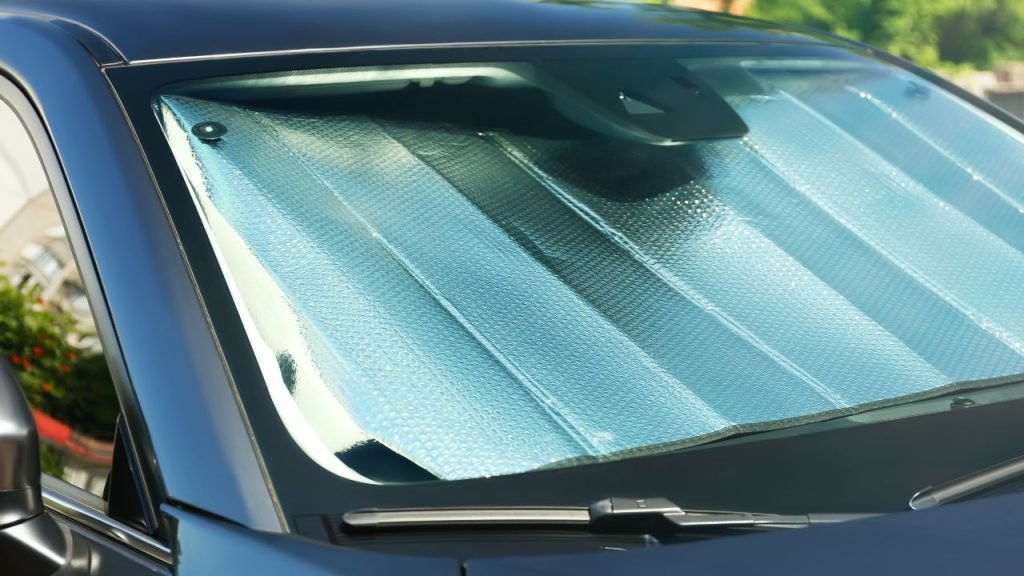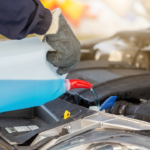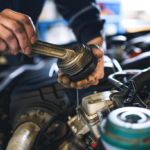Summer is here, and it’s time to hit the road for some fun in the sun. No matter where you’re headed this summer, it’s important to make sure your car is ready for the journey. In this beginner’s guide to summer car maintenance, we’ll cover all the tips and tricks you need to know to keep your vehicle running smoothly throughout the season.
Table of Contents
The Importance of Summer Car Maintenance
The hot summer months can take a toll on your car, causing wear and tear that can lead to costly repairs down the line. From overheating engines to tire blowouts, neglecting basic maintenance can put you and your passengers at risk on the road. That’s why it’s essential that you take steps to keep your car in top shape during the summer months.
The Benefits of Maintaining Your Car During Summer
Not only does regular maintenance prevent breakdowns and accidents, but it also helps extend the life of your vehicle. Taking care of small problems before they become big ones can save you a lot of time and money in the long run. And by keeping your car well-maintained, you’ll enjoy better fuel efficiency and a smoother ride overall.
In short, investing a little time and effort into maintaining your car during summer will pay off big time in terms of safety, savings, and peace of mind throughout all of your summertime adventures. So let’s get started!
Check the Fluids
One of the most important things you can do to keep your car in good working order during the summer is to check all of the fluids. There are several key fluids that you should be checking on a regular basis, including your oil, coolant, and brake fluid.
Oil change and oil filter replacement
Your car’s engine needs clean, fresh oil to run smoothly. Over time, old oil can become contaminated with dirt and other debris, which can cause damage to your engine. That’s why it’s important to change your oil regularly.
Most mechanics recommend changing your oil every 3,000 miles or three months (whichever comes first). Along with changing your oil, you should also replace your oil filter.
The filter helps remove impurities from the oil as it circulates through your engine. A dirty or clogged filter can reduce the effectiveness of the oil and cause additional wear and tear on your engine.
Coolant level check
Your car’s cooling system is responsible for keeping the engine at a safe operating temperature. To ensure that it’s working properly during hot summer months, you need to check the coolant level regularly.
Your car’s coolant reservoir should have markings indicating minimum and maximum levels. If you’re running low on coolant, top it up with a 50/50 mix of water and antifreeze (unless otherwise indicated by manufacturer instructions).
Brake fluid check
Your brakes will play an important role in keeping you safe on hot summer roads. Before setting off on any long drives this summer, make sure that you’ve checked your brake fluid levels. The brake fluid reservoir is usually located near the back of the engine compartment or close to one side of the engine.
If the level is low, top it up with the recommended type of brake fluid. Be sure to use your vehicle’s owner manual or consult with a mechanic to ensure you’re using the correct type of brake fluid for your car.
Checking and maintaining your car’s fluids is an easy and inexpensive way to help ensure that your car runs smoothly and reliably during summer months. Don’t forget to mark it on your calendar or planner so you don’t forget when it’s time for a check-up!
Inspect the Tires
Tire Pressure Check
One of the most important things to do during summer car maintenance is to check the tire pressure. The proper tire pressure can be found in your car owner’s manual or on a sticker located on the driver’s side door jamb.
It is essential to make sure that all four tires have the same air pressure, and it should be checked when your tires are cold. Underinflated tires reduce fuel economy, increase tire wear and tear, and create an unsafe driving experience.
If you notice that one or more of your tires are underinflated, add air until you reach the recommended pressure level. Overinflated tires can be just as dangerous as underinflated ones because they reduce traction on wet roads and increase handling problems.
Tire Tread Depth Inspection
Checking the tread depth on your car’s tires is also critical. The tread depth should never go below 1/16th of an inch, which means it is time for new tires if it does. Old or worn-out tires can result in less traction while driving, making it difficult to stop quickly when necessary.
To check your tire’s tread depth at home, use a penny by placing it upside down in one of the grooves along with Lincoln’s head facing down into the groove. If you can see all of Lincoln’s head, then there isn’t enough tread left on your tire.
Wheel Alignment Check
Another vital aspect of inspecting your car’s tires is checking for proper wheel alignment. A misaligned wheel creates uneven wear on each tire and reduces road grip.
It also shortens their lifespan which will cost you more money eventually in replacement costs. You may have noticed that your steering wheel pulls to one side while driving straight ahead if there’s a problem with wheel alignment.
If the steering wheel is not straight, it may be time to bring your vehicle to a mechanic for a wheel alignment. Properly aligned wheels mean better gas mileage and an overall smoother ride.
Clean the Car Exterior and Interior
Wash and Wax the Car Exterior
Summer is a great time for road trips and adventures, but all that driving can cause your car to accumulate dirt, dust, and bugs on its exterior. A dirty car not only looks bad but can also cause damage to the paintwork.
To ensure that your car stays in tip-top condition, it’s important to give it a good wash and wax regularly. To get started, you’ll need a bucket of soapy water, a sponge or brush, and a hose.
Begin by rinsing your car with water to remove any loose dirt or debris. Then apply some soapy water to your sponge or brush and start washing the car from top to bottom.
Be sure to rinse off all soap residue thoroughly before drying with a clean towel. Apply some wax using a soft cloth or applicator pad for added protection against the summer sun.
Vacuum and Clean the Interior
A clean interior not only makes your car look better but also creates a more pleasant driving experience for you and your passengers. Dust, crumbs, dirt, and other debris can accumulate quickly inside your car during summer travels. To keep things tidy inside your vehicle, regular vacuuming is essential.
Start by removing all floor mats and shaking them out thoroughly outside of the car. Then use a vacuum cleaner with attachments to clean out all of the seats including under them if possible as well as any tight spaces such as between seat cushions or under pedals where debris likes to hide.
Be sure to pay special attention to areas such as cup holders which tend to collect spills or other liquids that can get sticky over time! Once everything has been vacuumed up nicely then use some microfiber cloths dampened in warm water (or cleaning solution of choice) one section at a time wiping down surfaces like the dashboard, center console and door panels until everything looks shiny and new again.
Test the Battery
Check Battery Terminals for Corrosion
One of the most important things to check when it comes to your car’s battery is the terminals. Over time, these can become corroded or covered in grime which can reduce the flow of electricity from the battery to other components in your car’s electrical system.
Check each terminal for signs of corrosion and if you find any, clean them thoroughly using a wire brush or battery cleaning tool. It’s important not to ignore corroded terminals as this can cause your car to fail to start when you need it most.
If you’re not comfortable cleaning them yourself, take your car into a mechanic who can do it for you quickly and easily. It’s also worth noting that corrosion on terminals may indicate an issue with your charging system or alternator, so keep an eye out for any other warning signs such as dimming lights or difficulty starting the engine.
Test Battery Voltage
Testing your car’s battery voltage is essential if you want to ensure it’s in good condition and working properly. This is especially important during hot summer months when higher temperatures are known to reduce battery life.
You’ll need a multimeter or voltmeter which can be purchased inexpensively from most auto parts stores. Firstly, turn off all lights and accessories in your car and let it sit for a few minutes before testing the voltage.
Connect the multimeter positive lead (red) onto the positive terminal of the battery and negative lead (black) onto negative terminal then read off its output voltage reading on meter display. If it shows less than 12 volts, then it might indicate that there is an issue with charging system or alternator may need repair service soon!
If everything checks out okay with no red flags found during testing process then congratulations! Your vehicle’s electrical system should now be running smoothly without any hiccups.
Replace Air Filters
Cabin air filter replacement
If you’re planning on taking a long road trip this summer, it’s important to make sure your cabin air filter is working properly. The cabin air filter is responsible for filtering the air that comes into your car through the HVAC system. It helps remove pollutants, dust, and other debris from the air before it reaches you and your passengers.
To check if your cabin air filter needs replacing, locate it in your car’s manual or by searching online. Typically, the cabin air filter can be found behind or beneath the glove box in most vehicles.
Once located, remove and inspect it for dirt and debris buildup. If there’s a significant amount of buildup, it’s time to replace the filter with a new one.
Engine air filter replacement
The engine air filter is also an important component of summer car maintenance. It prevents dirt and debris from entering the engine through the intake system which could cause damage over time.
To inspect and replace your engine air filter, locate it under your vehicle’s hood. Refer to your owner’s manual or search online for specific instructions on how to access this component in your vehicle model.
Once located, remove it from its housing by unclipping or unscrewing any fasteners holding it in place. Inspecting its condition is simple – hold up the old one against a light source such as sunlight; if you can’t see through its pleats easily or if there is visible dust accumulation in between them then you may need to replace it with a new one.
Check Brakes and Suspension System
Brake Pads Inspection: Are They Worn Out?
Checking the brakes is essential for keeping you and your passengers safe while driving. During the summer months, brake pads tend to wear out faster due to increased usage on long road trips and stop-and-go traffic.
One easy way to check if your brake pads are worn out is to listen for a high-pitched squeaking or grinding noise when you hit the brakes. If you hear this sound, it’s time for new brake pads.
Another way is to visually inspect them by looking through the spokes of your wheel at the caliper assembly; if there’s less than 3mm of pad material remaining, it’s time to replace them. Replacing brake pads can be done at home with just a few basic tools.
However, if you’re not too familiar with car repairs, it’s always best to take your vehicle into a professional mechanic. We recommend getting your brakes inspected every 10k-20k miles depending on your driving habits.
Shock Absorbers Inspection: Are They Leaking?
Shock absorbers or struts play a critical role in ensuring that you have a smooth ride while driving on bumpy roads. During summer, these components can become damaged due to exposure to heat and sun rays which can lead to oil leaks and other issues.
To check whether or not your shock absorbers are leaking oil or damaged in any way, use a flashlight and visually inspect the shocks for signs of leakage around the seals or mounting points. Another way is by performing a simple bounce test where you push down hard on each corner of the car one-by-one; if there’s excessive bouncing after releasing pressure, then it could be time for new shocks.
If any issues arise during an inspection of either brakes or suspension system don’t hesitate making an appointment with a mechanic. These components are not only critical to your safety but also to the performance of your vehicle.
Conclusion
Maintaining your car during summer is crucial for ensuring that it runs smoothly and efficiently. Not only does proper maintenance prevent unexpected breakdowns, it also helps extend the life of your vehicle. By following these simple tips and tricks, you can keep your car in tip-top shape all summer long.
First and foremost, checking the fluids in your car is an essential part of maintaining it. Regular oil changes, coolant level checks, and brake fluid inspections are must-haves on your summer maintenance checklist.
Additionally, inspecting your tires for proper pressure and tread depth can help prevent blowouts while driving on hot roads. Cleaning the exterior and interior of the car may seem like a cosmetic task, but it actually plays a significant role in preventing rust and corrosion over time.
And don’t forget to test the battery periodically to ensure that it’s functioning properly. Replacing air filters regularly keeps the air inside clean and breathable while also helping improve fuel efficiency.
Checking brakes pads and shock absorbers helps ensure that everything is working smoothly underneath the hood. By following these simple tips and tricks for summer car maintenance, you’ll be able to keep your vehicle running smoothly all season long without any unexpected hiccups or costly repairs down-the-line.






